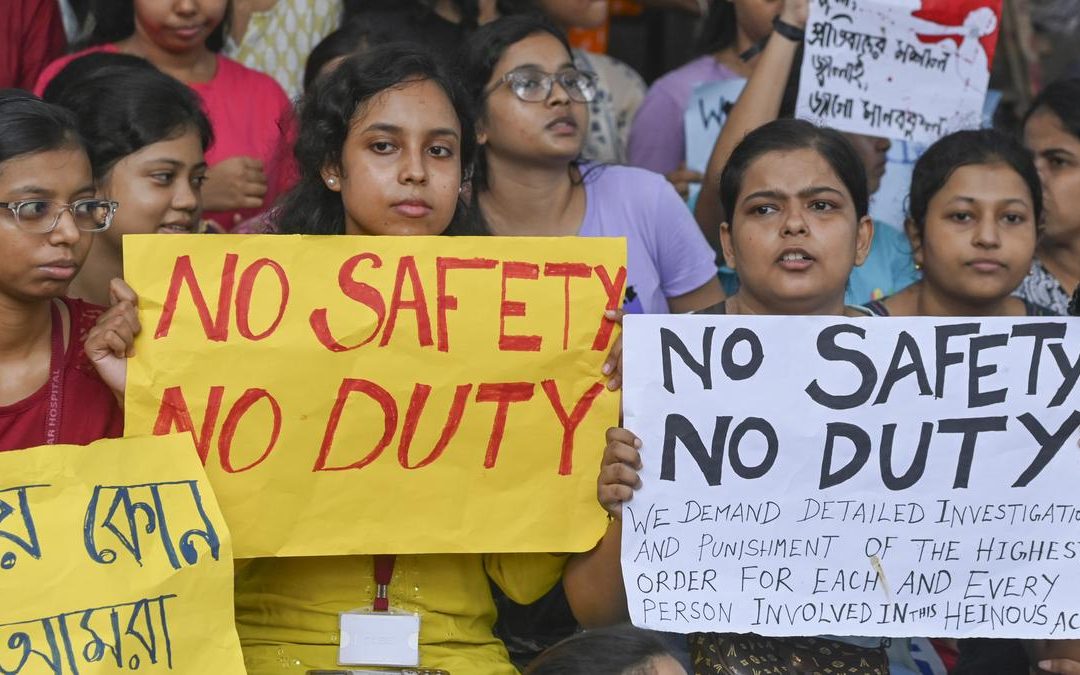The healthcare sector in India is facing a significant disruption as medical professionals across the country are participating in a widespread strike under the banner of ‘No Safety, No Duty.’ This movement, ignited by the shocking murder and rape of a young doctor in Kolkata, has led to a substantial impact on hospital services nationwide.
The recent tragic incident involving the brutal murder and rape of Dr. Anisha Mehta in Kolkata has sent shockwaves through the medical community and beyond. Dr. Mehta, a young and promising doctor, was found dead in her hospital quarters after being subjected to a horrific attack. This crime has not only grieved the nation but has also highlighted the dire safety concerns faced by healthcare professionals.
In the wake of this tragedy, doctors and medical staff across India have rallied together, demanding urgent measures to ensure their safety. The ‘No Safety, No Duty’ stir has emerged as a powerful expression of their frustration and fear, with healthcare professionals insisting that their work environments must be secure for them to continue their duties effectively.
The strike has led to a significant disruption in hospital services across the country. Many hospitals, particularly those in urban centers, have been forced to operate at reduced capacity, with emergency services and routine procedures being severely affected.
Reports indicate that outpatient departments (OPDs) are functioning minimally, elective surgeries have been postponed, and several diagnostic services have been halted. The disruption is particularly felt in public hospitals, where the majority of patients rely on government-run facilities for their healthcare needs.
Concerns and Demands
The primary demands of the striking medical professionals center around improved safety measures in hospitals. Key issues include:
- Enhanced Security: There is a call for the installation of better security systems in hospitals, including surveillance cameras, increased security personnel, and controlled access to sensitive areas.
- Legislative Protection: Medical professionals are seeking stronger legal protections against violence and harassment, including more stringent penalties for those who attack healthcare workers.
- Support Systems: The demand for robust support systems for victims of violence within the medical community, including counseling and legal aid, is a significant part of the protest.
- Workplace Safety Protocols: There is also a push for the establishment of clear safety protocols and emergency response plans to handle any potential threats to staff.
In response to the strike, several state governments and hospital administrations have begun addressing some of the concerns raised by the medical community. Emergency measures, such as the deployment of additional security personnel in hospitals and the initiation of discussions on policy changes, are underway.
The Union Health Ministry has promised a review of safety measures and has called for an urgent meeting with representatives from medical associations to discuss possible solutions. However, the effectiveness and timeliness of these actions remain to be seen.
The ongoing strike underscores a critical issue facing healthcare systems worldwide: the safety of medical professionals. The incident in Kolkata and the subsequent nationwide stir have shone a spotlight on the risks faced by those who work tirelessly to save lives.
Beyond the immediate disruptions, this movement has sparked a broader conversation about the need for systemic changes to protect healthcare workers. It highlights the intersection of safety, justice, and the right to a secure working environment, emphasizing that the protection of medical professionals is essential not just for their well-being but for the overall efficacy of the healthcare system.





